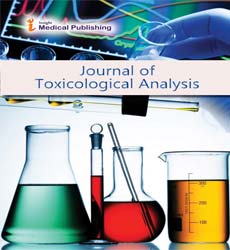Abstract
Toxicity of Pesticides on CNS
The focus of this study is to express the toxic effect of different classes of pesticides on central nervous system. Pesticides are responsible for the neurodegenerative disorders. It can influence on ion channels such as sodium channels as well as neurotransmitters. The mode of action of pesticides include neuropathy (destruction of whole neurons), axonopathy (interfere with axon activity), myelopathy (disrupt myelination of neuron) and neurotoxicant (effect neurotransmitters such as acetylcholine). The main classes of pesticides include organophosphorus, carbamates, pyrethriods and organochlorine compounds. Organophosphate acts on the acetylcholinesterase (AChE). It can hydrolyze AChE and cause cholinergic syndromes. The symptoms of cholinergic syndromes are sweating, salivation, bronchial secretion, bronchoconstriction, mitosis, diarrhea, tremors and muscular twitching. The mechanism of toxicity of carbamate is also related to that of OPs, as it can also inhibit AChE. Pyrethroids act on electrical synapse of nerve impulse. Organochlorine compounds such as DDT disrupt the sodium channel in axonal membrane. Pesticides are responsible for Parkinson’s disease. The symptoms of Parkinson’s disease include loss of muscle control, trembling and absence of coordination, anxiety, constipation, dementia and depression. Farm workers, farmers and occupational exposure of pesticides are mostly diagnosed with neurodestructive disease. It is concluded that acute exposure is somehow manageable as compared to chronic exposure. More findings require educating people about dangerous activity of pesticides. Therapeutic strategies should be used to treat diseases related to pesticides. Destruction to nigrostriatal dopaminergic neurons in early life would be anticipated to result in clinical manifestations of Parkinson’s disease as the individual ages. This hypothetical probability needs to be investigated in experimental animal models.
Author(s): Atika Islam and Muhammad Faheem Malik
Abstract | Full-Text | PDF
Share This Article
Open Access Journals
- Aquaculture & Veterinary Science
- Chemistry & Chemical Sciences
- Clinical Sciences
- Engineering
- General Science
- Genetics & Molecular Biology
- Health Care & Nursing
- Immunology & Microbiology
- Materials Science
- Mathematics & Physics
- Medical Sciences
- Neurology & Psychiatry
- Oncology & Cancer Science
- Pharmaceutical Sciences
